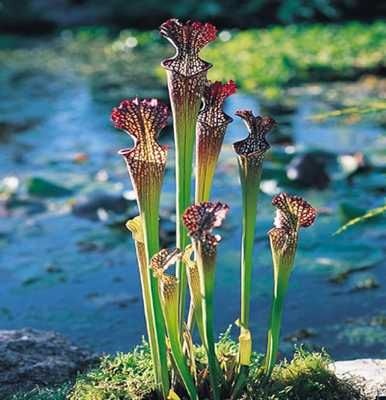Hi friends, first of all thanks to bitlanders which is a best source and platform in order to express feelings and experience on any topic,so today i am going to show my experience about the Carnivorous plants,These are the plants which attracts and catches the insects and other living creatures by their trapping mechanism and easily gets nutrients through digesting system.There are thousands of species of carnivorous plants with different shape and size having different trapping mechanism in different places of the world but some of the most popular plants are given below.
10. Sarracenia
Sarracenia is also famous for the North American Pitcher plant, It is a easiest carnivorous plants to grow any where.this Genus of carnivorous plants indigenous to eastern seaboard and most of the species of this found in great lakes south eastern canada and southeast states.Sarracenia is the first plant with a pitfall trap.
Sarracenia leaves resembles with a funnel having hood like structure growing over the plant to prevent rain water from diluting the digestive juices in it. Insects and other living creatures are attracted by smell,colour and a nectar like secretion on the top of the pitcher. because of having Slippery footings, at least one species is aided by a narcotic drug lacing the nectar and it causes insects to fall inside where they die within some time and are digested by enzymes easly.
9. Nepenthes

Nepenthes is also famous for tropical pitcher plants or monkey cups, these are also the genus of carnivorous plants with pitfall traps . according to survey There are 130 species that are widely spread on earth and it can be easly found in Malaysia,china,Indonesia,Madagascar,Philippines, Seychelles,India,Australia, Sumatra and Borneo.The nickname “monkey cups” comes from the fact that monkeys have been observed drinking rain water from the cups of this plant.
The height of the Most of Nepenthes species are tall 10-15m with shallow root.its leaves looks like growing sword having a tendril from the tip of the leaf. At end of the tendril the pitcher forms first a small bulb which expands and forms a cup. The plant produced fluid in a trap whic can be watery ors syrup and it is used to Attract and digest insects.On the lower part of the cup galand is situated that distribute and absorb nutrients. Most of these plants are small and able to trap only insects, but in some larger species such as Nepenthes Rajah and Nepenthes Rafflesiana are able to catch small mammals like rats lizards etc.
8.Genlisea
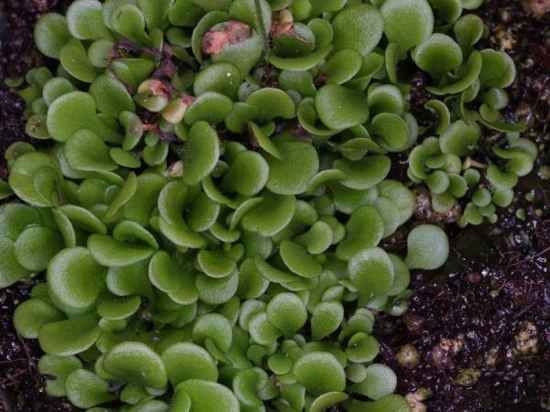
Genlisea is also known as the corkscrew plant . According to survey there are 21 species of genlisea is made up of 21 species and generally grows in semi aquatic and wet terrestrial environments and can be found across central and South America and africa.
these are small herbs having yellow flowers that makes Traps that are very easy to enter but very difficult and impossible to exit from it, having small hairs growing towards entrance, the ever forward propelling spiral. In this case of plant there are two distinct types of leaves which are given below,
1.Photosynthetic leaves above ground
2.Specialized underground leaves
photosynthetic leaves are used to attract,trap and digest minute creatures for example protozoans.Underground leaves having the duty of roots like anchorage and absorbing water.Hollow tubes are formed by the underground leaves under the ground with "forward propelling corkscrew" shape system and also having constant water flow,minute creatures can easly make their way to enter in these tubes but will not able to find way out again,they will be absorbed and digested easly on the correct part of the tubes.
7.Darlingtonia Californica
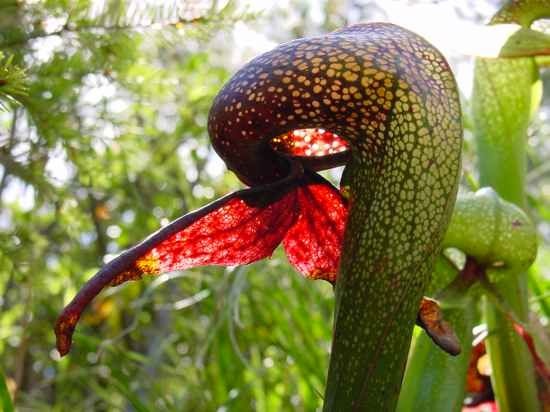
Darlingtonia Californica is also famous for calling it The Cobra Lilly or The California Pitcher plant. it is also famous for the the sole member of the darlingtonia genus.it is mostly found in Oregon and Northern California. These types of plants grows in seeps and bogs having cold running water.
The leaves of the Cobra Lily bears bulbous having hollow cavity with a structure underneath a swollen balloon like structure and 2 pointed leaves hanging at the end of the plant.A pitfall trap does not used by the cobra lilly, in this case insects can enter easly into but confused to come out by light speckles.There are thousands of fine dense hairs grows inwards the plant insects follow the hairs to enter deeper to the digestive organs but they not to move backwards to escape.
6.Utricularia
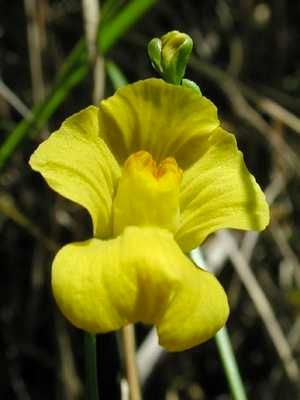
Utricularia is also famously known as bladderworts.It is another genus of carnivorous plants having about 220 species.They can be found in fresh water and wet soil as terrestrial or aquatic species on almost every continent expect antarctica.
These carnivorous plants uses the bladder traps, Most of these species have very small traps by which they catches only minute creatures like protozoa etc, range of traps can be from 0.2 mm to 1.2 cm.Larger trapping larger creatures like small tadpoles and water fleas.
On a trapdoor having small trigger hairs.when the trigger hairs are tripped, the doors of trap opened up and suddenly sucks the insects and surrounding water and closes the door again.
5.Pinguicula
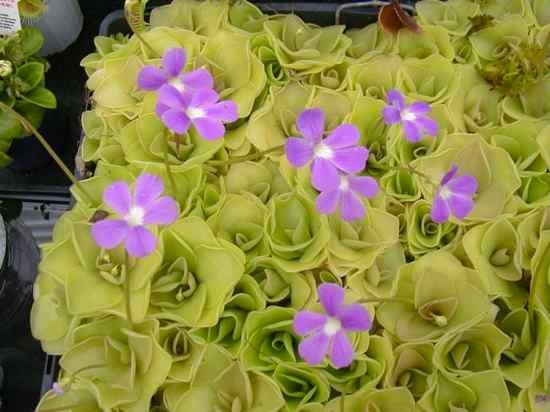
Pinguicula is also famous as butterworts , these are also gens of carnivorous plants these plants uses sticky leaves for traping , lureing and digesting insect and other small creatures.According to survey there are about "80" species and can easly be found at North america, South America, Asia and Europe.
The leaves of this plant can be usually bright green or pinkish. This plants holds two special cells on the top of the butterwort leaves.
1.Penduncular gland,
1.Sessile glands
1st gland penduncular having secretory cells on top . These cells able to produce "mucilaginous secretion" that forms visible droplets across the surface of leaves and also behave like flypaper. The 2nd glands are sessile glands, They usually lie flat on the surface of the leaves and also able to produce enzymes like esterase ,amylase and protease, which is very use full for digesting process.
4.Drosera
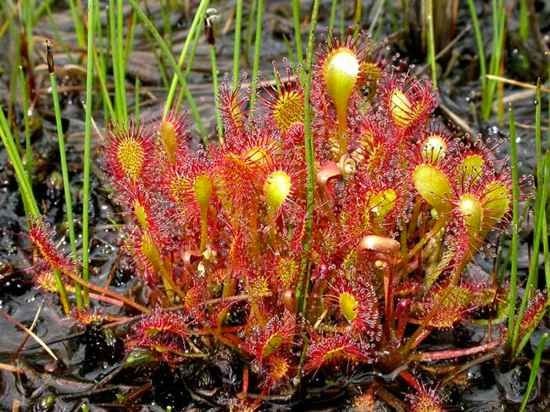
Drosera is also famously and commonly known as sundews.it is anther genes of carnivorous plant having about 194 species .These are widely spread on every continent exccept Antarctica.its height is about 1cm - 1m and this plant is able to live up to 50 years.
it is movable glandular tentacles having topped with sweet and sticky secretions. this plant is able to trap the insects by landing of insects on its sticky tentacles and plant is also able to move more tentacles in the direction of the insect.After traping small "sessile glands" digest the insect and resulting nutrients which are used to aid growth.
3.Byblis
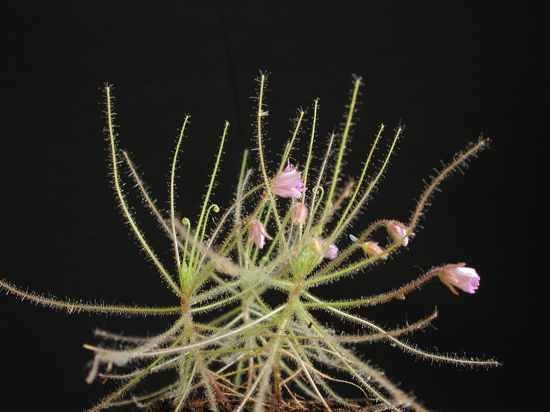
Byblis is commonly a known as a rainbow plant ,it is a small genus of carnivorous plant and can be found easly throughout Australia . The name rainbow plant comes due to attractive appearance of this plant .these plants looks like similar to the Drosera and Drosophllum but it is not related to any one of them and also may be distinguished as "zygomorphic" flowers with five curved stamens.
usually leaves having round cross- section and at the end they are tend to be very tapered and elongated ,Leave's surface is completely covered with hairs that release a "sticky mucilaginous substance" which traps small insects and minute objects .
2.Aldrovanda vesiculosa
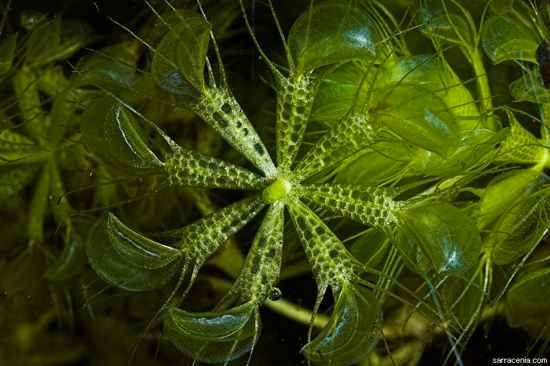
Aldrovanda vesiculosa is also famous as waterwheel plant , it is rootless carnivorous plant and It lives on small aquatic vertebrates by using trap mechanism called commonly known as snap trap.
These types of plants consisting of free floating stems its height is usually from 6 to 11 cm in length and the trap leaves are from 2 to 3 mm . Traps system is attached to petioles it contains air & assists in "floatation". This plant is a very fast growing plant and capable of reaching upto a 4 to 9 mm per day and in some cases even producing a new whorl every day.
In this plant the trap is consists of two lobes it folds together and makes the "snap traps". The trap gets close in just only 10 milliseconds, it is one of the fastest examples of the carnivorous plant movement .
1.Dionaea Muscipula

Dionaea Muscipula are commonly known as a Venus flytrap, It is the most well known carnivorous plant and can trap arachnids and insects.
The Venus flytrap plant is a small plant having 4 to 7 leaves which grows from short "subterranean stem". The leaf of this plant is divided into two regions long flat heart and a pair of terminal lobes hinged at the midrib in order to forming the trap. Having the edges secrete mucilage and the red pigment at the inner surfaces of these lobes.
These plants are also famous for rapid movement due to sudden shut by sensory of special hairs.These plants are very advanced it is capable of telling difference between "live stimulus and non living stimulus". The lobes shut in just 0.1 seconds. when insects lands on the surface of the lobes the leaves will shut suddenly and will make seal insects will find no way out and at last insect will be crushed edges of the lobes, and further digestion process will be taken. place....
Here are some videos about carnivorous plants
note: All the videos are taken from youtube.com and pictures are from google.com.

